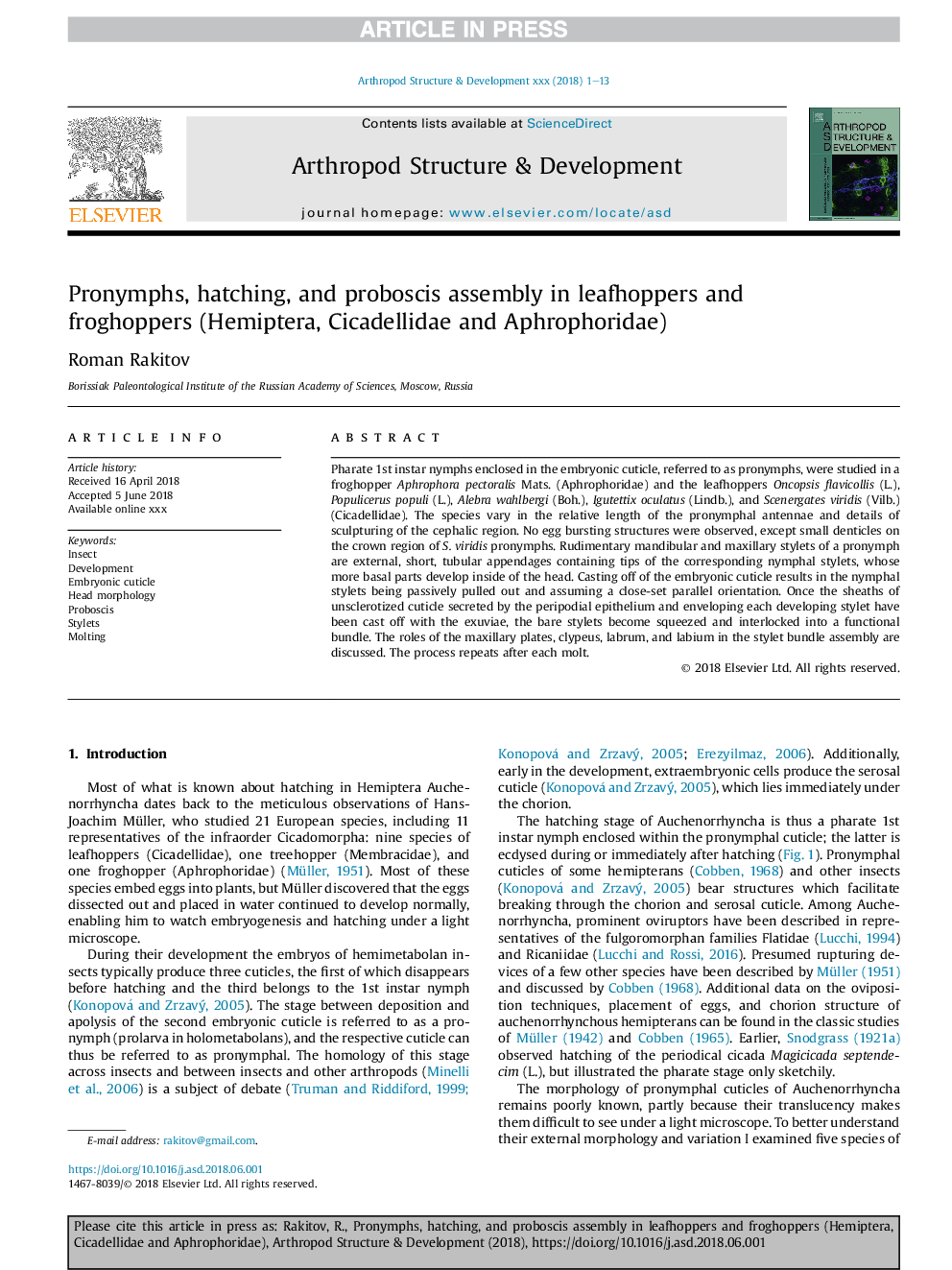| Article ID | Journal | Published Year | Pages | File Type |
|---|---|---|---|---|
| 10212225 | Arthropod Structure & Development | 2018 | 13 Pages |
Abstract
Pharate 1st instar nymphs enclosed in the embryonic cuticle, referred to as pronymphs, were studied in a froghopper Aphrophora pectoralis Mats. (Aphrophoridae) and the leafhoppers Oncopsis flavicollis (L.), Populicerus populi (L.), Alebra wahlbergi (Boh.), Igutettix oculatus (Lindb.), and Scenergates viridis (Vilb.) (Cicadellidae). The species vary in the relative length of the pronymphal antennae and details of sculpturing of the cephalic region. No egg bursting structures were observed, except small denticles on the crown region of S. viridis pronymphs. Rudimentary mandibular and maxillary stylets of a pronymph are external, short, tubular appendages containing tips of the corresponding nymphal stylets, whose more basal parts develop inside of the head. Casting off of the embryonic cuticle results in the nymphal stylets being passively pulled out and assuming a close-set parallel orientation. Once the sheaths of unsclerotized cuticle secreted by the peripodial epithelium and enveloping each developing stylet have been cast off with the exuviae, the bare stylets become squeezed and interlocked into a functional bundle. The roles of the maxillary plates, clypeus, labrum, and labium in the stylet bundle assembly are discussed. The process repeats after each molt.
Related Topics
Life Sciences
Agricultural and Biological Sciences
Insect Science
Authors
Roman Rakitov,
